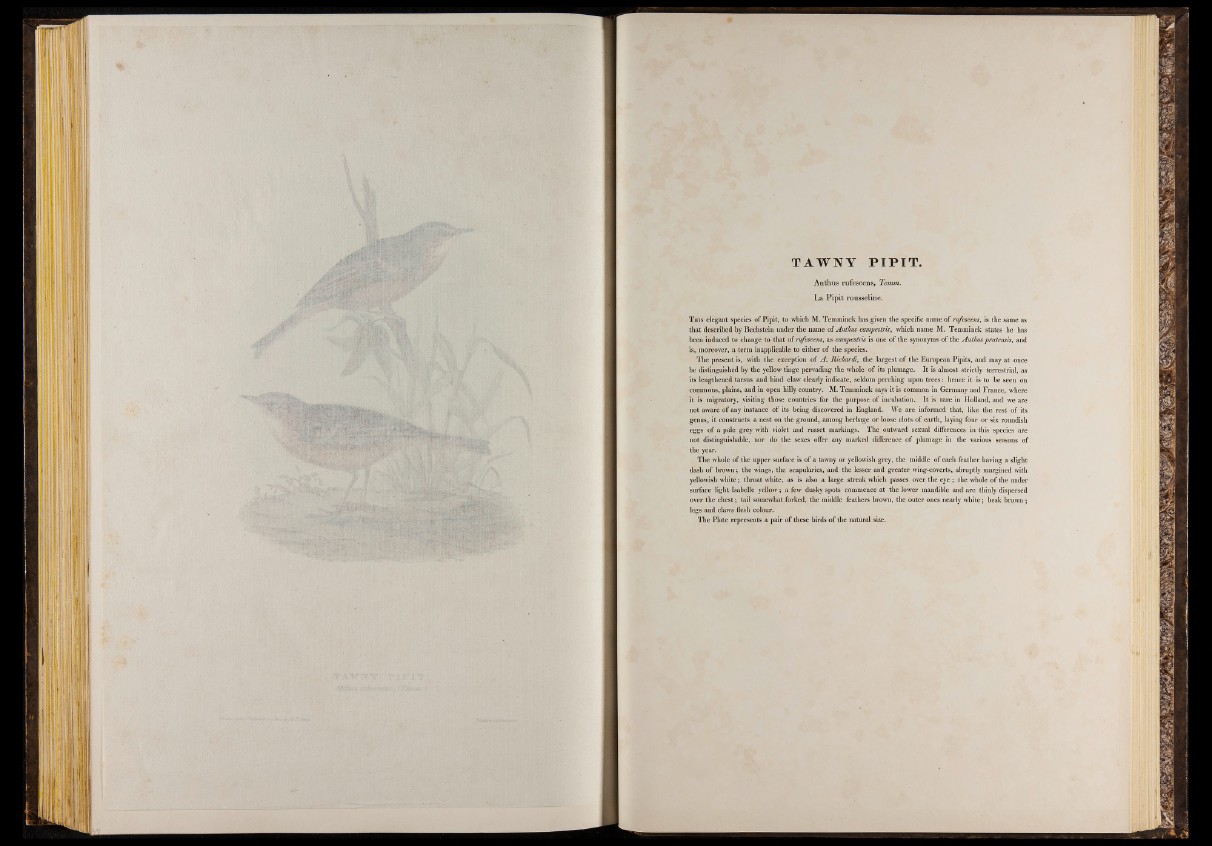
T AW N Y P I P IT .
Anthus rufescens, Temm.
La Pipit rousseline.
T h is elegant species of Pipit, to which M. Temminck has given the specific name of rufescens, is the same as
that described by Bechstein under the name of Anthus campestris, which name M. Temminck states he has
been induced to change to that of rufescens, as campestris is one of the synonyms of the Anthus pratensis, and
is, moreover, a term inapplicable to either of the species.
The present is, with the exception of A. Richardi, the largest of the European Pipits, and may at once
be distinguished by the yellow tinge pervading the whole of its plumage. It is almost strictly terrestrial, as
its lengthened tarsus and hind claw clearly indicate, seldom perching upon trees: hence it is to be seen on
commons, plains, and in open hilly country. M. Temminck says it is common in Germany and France, where
it is migratory, visiting those countries for the purpose of incubation. It is rare in Holland, and we are
not aware of any instance of its being discovered in England. We are informed that, like the rest of its
genus, it constructs a nest on the ground, among herbage or loose clots of earth, laying four or six roundish
eggs of a pale grey with violet and russet markings. The outward sexual differences in this species are
not distinguishable, nor do the sexes offer any marked difference of plumage in the various seasons of
the year.
The whole of the upper surface is of a tawny or yellowish grey, the middle of each feather having a slight
dash of brown; the wings, the scapularies, and the lesser and greater wing-coverts, abruptly margined with
yellowish white; throat white, as is also a large streak which passes over the eye ; the whole of the under
surface light Isabelle yellow; a few dusky spots commence at the lower mandible and are thinly dispersed
over the chest; tail somewhat forked, the middle feathers brown, the outer ones nearly white; beak brown ;
legs and claws flesh colour.
The Plate represents a pair of these birds of the natural size.
| |